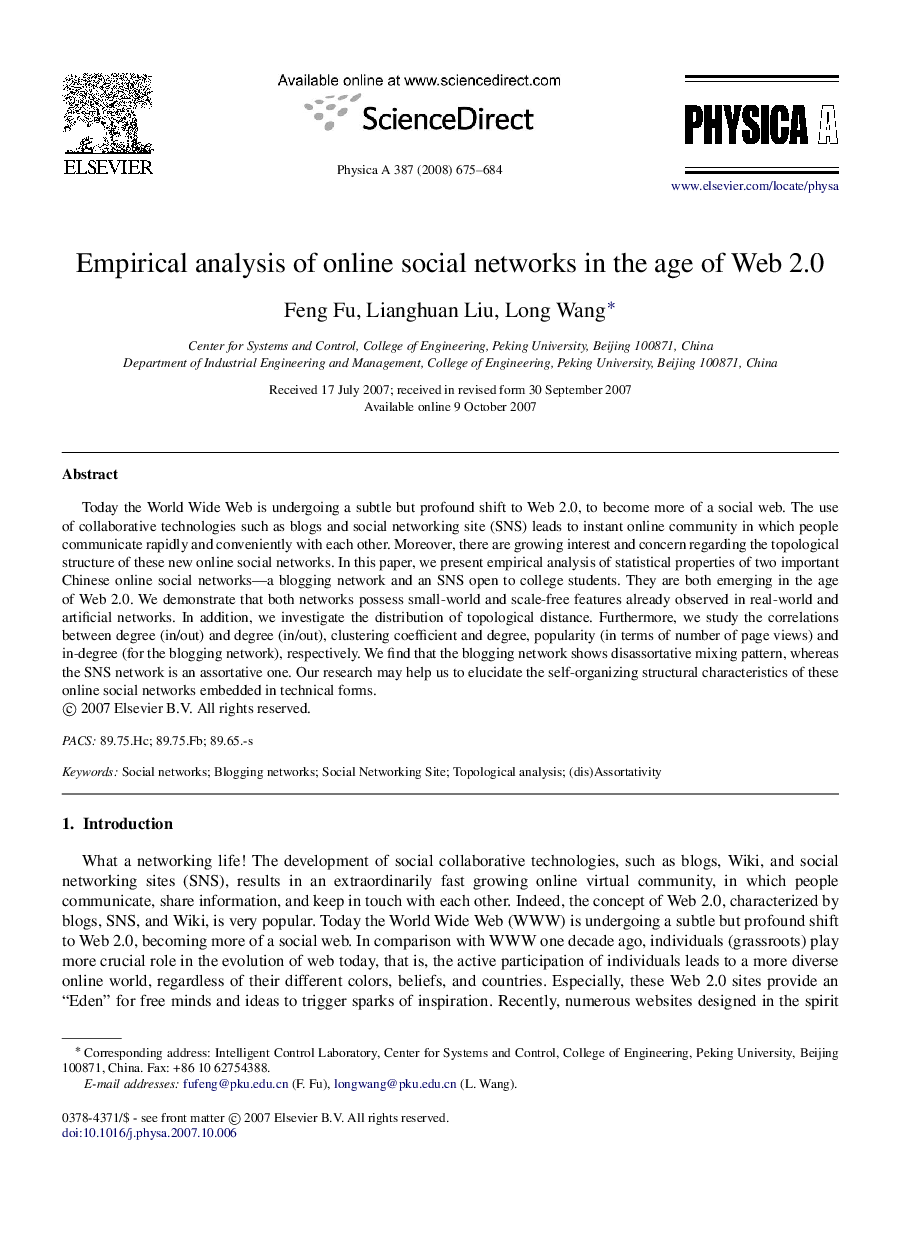| Article ID | Journal | Published Year | Pages | File Type |
|---|---|---|---|---|
| 978047 | Physica A: Statistical Mechanics and its Applications | 2008 | 10 Pages |
Today the World Wide Web is undergoing a subtle but profound shift to Web 2.0, to become more of a social web. The use of collaborative technologies such as blogs and social networking site (SNS) leads to instant online community in which people communicate rapidly and conveniently with each other. Moreover, there are growing interest and concern regarding the topological structure of these new online social networks. In this paper, we present empirical analysis of statistical properties of two important Chinese online social networks—a blogging network and an SNS open to college students. They are both emerging in the age of Web 2.0. We demonstrate that both networks possess small-world and scale-free features already observed in real-world and artificial networks. In addition, we investigate the distribution of topological distance. Furthermore, we study the correlations between degree (in/out) and degree (in/out), clustering coefficient and degree, popularity (in terms of number of page views) and in-degree (for the blogging network), respectively. We find that the blogging network shows disassortative mixing pattern, whereas the SNS network is an assortative one. Our research may help us to elucidate the self-organizing structural characteristics of these online social networks embedded in technical forms.
